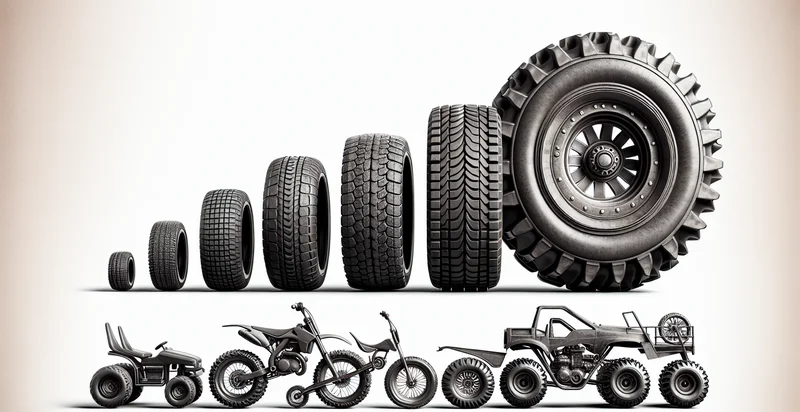Identify wheel sizes
using AI
Below is a free classifier to identify wheel sizes. Just upload your image, and our AI will predict what size the wheel is - in just seconds.

Contact us for API access
Or, use Nyckel to build highly-accurate custom classifiers in just minutes. No PhD required.
Get started
import nyckel
credentials = nyckel.Credentials("YOUR_CLIENT_ID", "YOUR_CLIENT_SECRET")
nyckel.invoke("wheel-sizes", "your_image_url", credentials)
fetch('https://www.nyckel.com/v1/functions/wheel-sizes/invoke', {
method: 'POST',
headers: {
'Authorization': 'Bearer ' + 'YOUR_BEARER_TOKEN',
'Content-Type': 'application/json',
},
body: JSON.stringify(
{"data": "your_image_url"}
)
})
.then(response => response.json())
.then(data => console.log(data));
curl -X POST \
-H "Content-Type: application/json" \
-H "Authorization: Bearer YOUR_BEARER_TOKEN" \
-d '{"data": "your_image_url"}' \
https://www.nyckel.com/v1/functions/wheel-sizes/invoke
How this classifier works
To start, upload your image. Our AI tool will then predict what size the wheel is.
This pretrained image model uses a Nyckel-created dataset and has 20 labels, including 10Inch, 12Inch, 14Inch, 15Inch, 16Inch, 17Inch, 18Inch, 19Inch, 20Inch and 21Inch.
We'll also show a confidence score (the higher the number, the more confident the AI model is around what size the wheel is).
Whether you're just curious or building wheel sizes detection into your application, we hope our classifier proves helpful.
Related Classifiers
Need to identify wheel sizes at scale?
Get API or Zapier access to this classifier for free. It's perfect for:
- Automotive Quality Control: This function can be integrated into the manufacturing process of vehicles to automatically identify and classify the wheel sizes used in car production. This ensures compliance with design specifications and helps prevent costly errors due to incorrect wheel installations.
- E-Commerce Product Verification: Online retailers can utilize this function to verify the wheel sizes of products listed on their platforms. By ensuring accurate classifications, businesses can enhance customer satisfaction and reduce return rates caused by incorrect product descriptions.
- Fleet Management Optimization: Fleet management companies can employ this function to monitor the sizes of wheels across their vehicle fleets. This data enables better maintenance scheduling and ensures vehicles operate under optimal conditions, reducing breakdowns and enhancing safety.
- Tire Retail Inventory Management: Tire retailers can leverage the wheel size identification function to manage their inventory effectively. Accurate classification helps to streamline stock levels, matching tire stocks with the most common wheel sizes used by customers, thus improving inventory turnover.
- Automotive Insurance Assessment: Insurance adjusters can use this function during assessments of accident-damaged vehicles to accurately classify wheel sizes. This information aids in making informed decisions regarding claims and helps in determining repair costs more accurately.
- Automotive Market Research: Researchers can analyze the prevalence of various wheel sizes in vehicles through image classification. Such insights can inform product development strategies and marketing campaigns aimed at addressing the needs of different consumer segments.
- Custom Wheel Design Validation: Custom wheel manufacturers can utilize this function to validate designs against existing wheel sizes in the market. By comparing their designs with the classified data, they can ensure compatibility with a broader range of vehicles before market launch.


